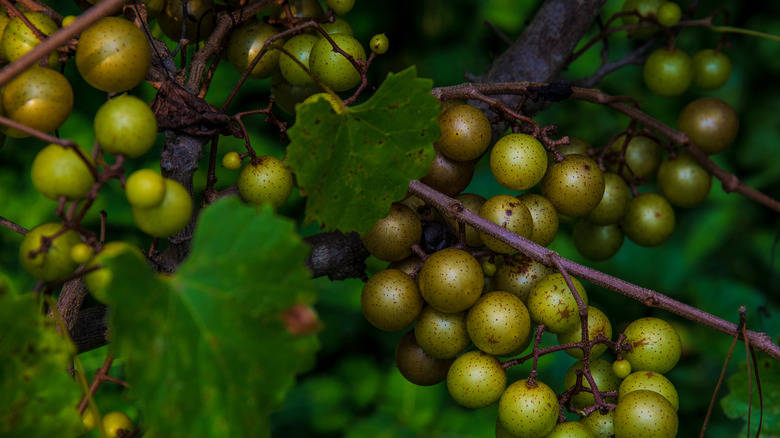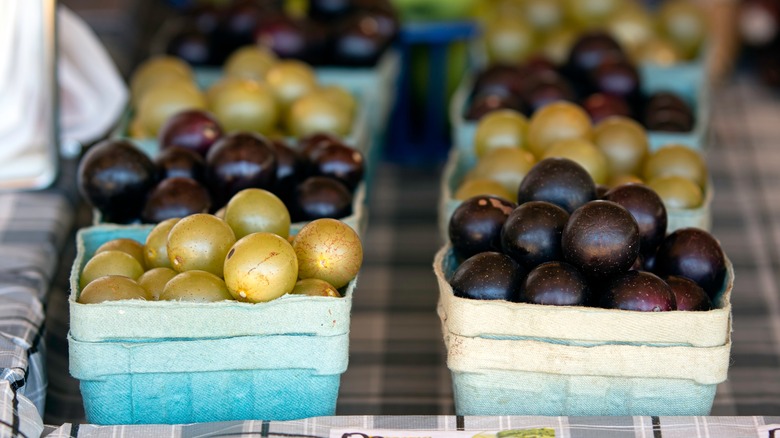Why Scuppernong Wine Is A North Carolina Favorite
The round, amber-green scuppernong grape is larger than the familiar, plump, purple grocery store variety. The berry, native to the American South, has been the state fruit of North Carolina since 2001. Scuppernongs — a kind of muscadine grape with a thick, speckled skin and a saccharine center — get their name from the Scuppernong River that curls through Tyrell and Washington Counties in North Carolina. The word scuppernong derives from the Algonquian "askuponong," and refers to "the place of the sweet bay tree."
Scuppernong grapes grow wild in North Carolina and are used in jams, baked goods, or spread on bread for a Southern take on the classic peanut butter and jelly sandwich. The plant is so entangled in the culture of North Carolina that the fruit is recalled in the state's official toast.
Scuppernong grapes have long been the source of regional fable and a syrupy, sweet juice. That juice is made into a fragrant wine, beloved by locals, and transforming the rolling vineyards of the Old North State into one of the country's burgeoning wine hubs.
The fruit and fable of the scuppernong
The muscadine's mythos in North Carolina dates back an estimated 400 years. A knotted morass of vines on Roanoke Island, christened "the Mother Vine," is the initial source of all scuppernong grapes. The hulking plant, situated in the sandy dirt of Manteo, is the country's oldest known grape vine.
Some believe the Mother Vine was the plant members of Sir Walter Raleigh's North American expedition documented in 1584, when explorers Philip Amadas and Arthur Barlowe wrote of a land abundant in grapes. However, there is no evidence to support the vine's existence before the 1720s.
Scuppernong grapes have been central in Southern stories for years, and appear multiple times in Harper Lee's "To Kill A Mockingbird." Over the years, many vineyards have fed the fable of the Mother Vine as part of the packaged allure of their product. Today, North Carolina boasts more than 200 wineries. Scuppernong wine is described as sweet and musky and can be used for cooking and simmering or casual sipping.

